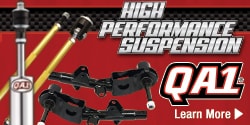lil red
Well-Known Member
looking for a bit of clarity, amidst the confusion of trying to understand camshaft duration....
Anyway, I understand that an accurate comparison of camshaft durations between manufacturers should be done at.050" lift, but is the difference in advertised duration a result of a different camshaft profile/curve, or is it because its measured at a different point when it moves of the base circle, like at ..002",.003", .006" or so?
for example the following 2 camshafts -
Lunati voodoo - 268*/276* and 226*/234* at .050" 1800 -6200 rpm
Howards - 273*/277* and 226*/230* 2200-6000 rpm
the lunati is 494/513 lift, the howards 525/531 and both 106 ICL
A 'step' in camshaft size is about 5* , so according to the duration at .050" these camshafts should be roughly the same size, correct?
Both are 226* at .050", however there is 5 deg. difference at the ad. duration
Anyway, I understand that an accurate comparison of camshaft durations between manufacturers should be done at.050" lift, but is the difference in advertised duration a result of a different camshaft profile/curve, or is it because its measured at a different point when it moves of the base circle, like at ..002",.003", .006" or so?
for example the following 2 camshafts -
Lunati voodoo - 268*/276* and 226*/234* at .050" 1800 -6200 rpm
Howards - 273*/277* and 226*/230* 2200-6000 rpm
the lunati is 494/513 lift, the howards 525/531 and both 106 ICL
A 'step' in camshaft size is about 5* , so according to the duration at .050" these camshafts should be roughly the same size, correct?
Both are 226* at .050", however there is 5 deg. difference at the ad. duration
















